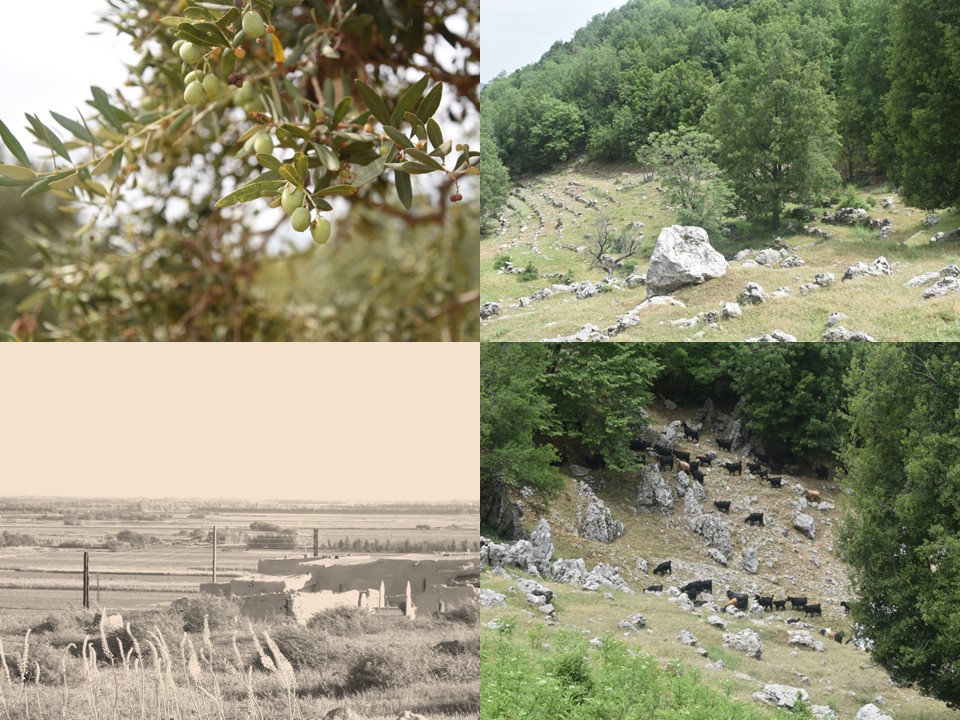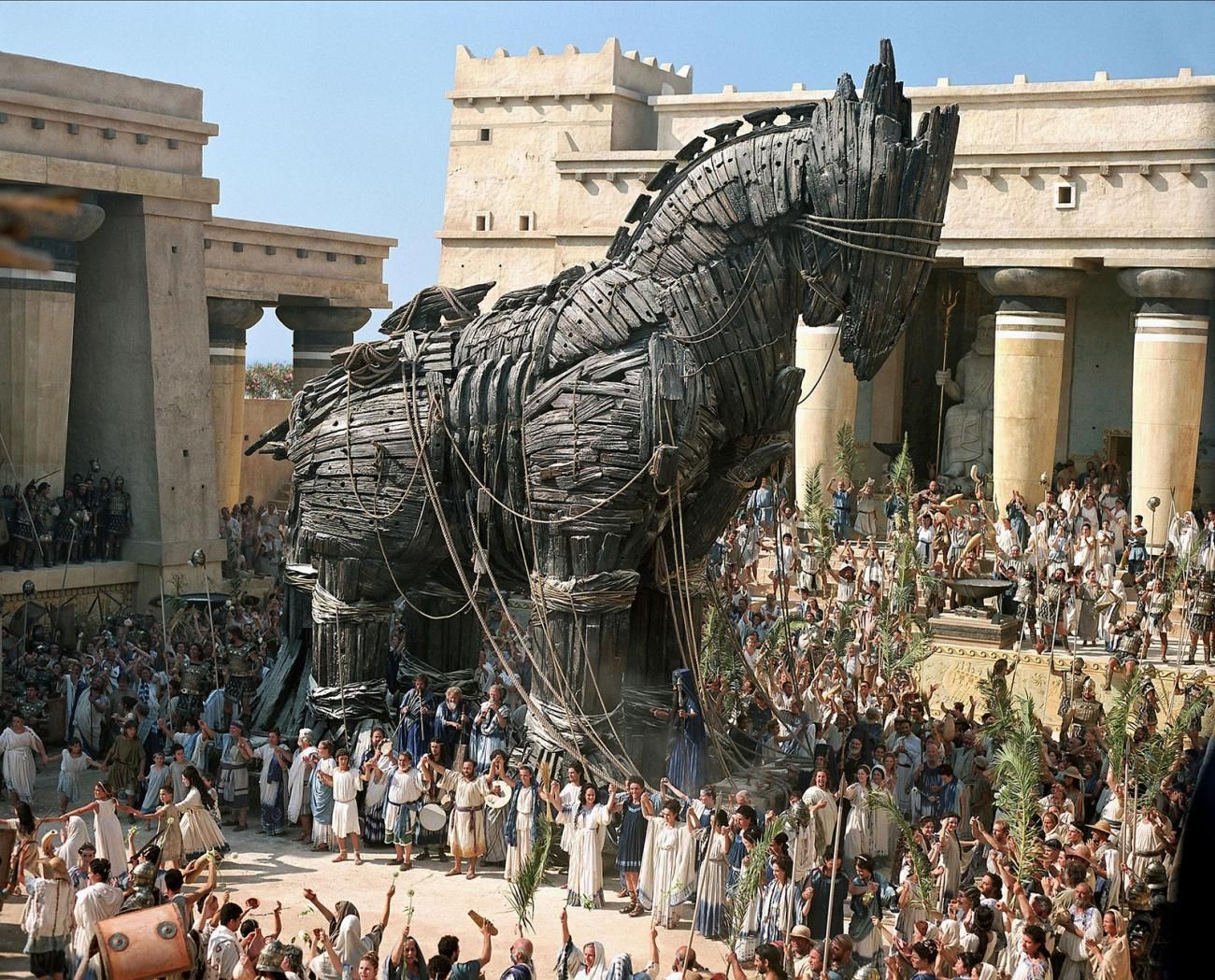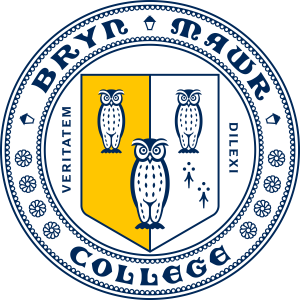- Instructor of record: Astrid Lindenlauf
- Other editing teacher: Katie Breyer
- Other editing teacher: Kari Fossum

This course examines the archaeology of one of the most fundamental shifts to have occurred in human society in the last 12,000 years, the origins of agriculture. Via assigned readings, class work and lectures we will consider the varied factors which led (or did not lead) to the adoption of agriculture, questioning what the core building blocks of agricultural life were across Western Asia and exploring societies that did not experience these changes. We will also discuss the impacts these developments have had, and continue to have, on modern society and culture in the Middle East, North Africa and beyond. For many scholars the roots of inequality and inequity can be seen more than ten thousand years ago, with the domestication of plants and animals. By exploring processes and practices over the long-term, students will build an understanding of and critically engage with discussions around inequality in the earliest agricultural societies. They will develop an understanding of how axes of power and difference interacted to produce inequalities and hierarchies in the ancient world, and how we can identify and interpret these through the archaeological record. Themes covered will include inequalities and hierarchies, societal organisation, identity (gender, ethnicity, culture, personhood etc.), communication, and the relationships between humans, animals, and the environment. Whilst doing so, the class will also critically examine the discipline of archaeology, considering the ways different biases have impacted the study of ancient agriculture. We will also address the relationships between colonialism and archaeology in Western Asia and explore what the future of a post-colonial and anti-racist archaeology looks like in this region.
- Instructor of record: Jennie Bradbury

This course will examine the state-of-the-art methodologies for fieldwork archaeology. We will be exploring multiple techniques and technologies that serve to identify archaeological sites in different geographical settings and to process, analyze, and catalog contextual artifacts. More specifically, we will consider different approaches to archaeological research in the field, from remote sensing to micro-stratigraphy. We will be employing several techniques to map, visualize, and represent data in a virtual environment; we will learn how to use GPS (Global Positioning System), GIS (Geographic Information System), and other geo-spatial data (including smartphone-based survey tools), as well as unmanned vehicles (commonly known as drones) for mapping, photographing, and visualizing archaeological sites and features. We will be learning the primary techniques and how-tos at the core of both archaeological survey and excavation. In addition, we will be also exploring different methods of processing artifacts: from archaeological photography (in the field and at the dig house/lab to pottery analysis protocol, from in-field recording techniques to archaeological databases.
- Instructor of record: Rocco Palermo
Instruction Mode: In Person
Class Meeting Dates and Times: Tuesday and Thursday - 2.25-3.45 pm in Dalton Hall 10

This course will explore the entanglement between the modern and contemporary film industry and the classical and late-classical world. We will be exploring different movies and tv series (from all over the world) in which the past, and particularly the Graeco-Roman world, is depicted, treated, interpreted, and re-imagined by screenwriters, directors, actors. From silent movies to Hollywood kolossal, and through European movies and on-demand productions (Netflix, Amazon, HBO, Disney+, etc.) we will be walking through the several ways in which cinema and TV have shaped out our understanding- and adjusted our conception of the ancient worlds of Athens and Rome. We will analyze narrative choices and compare them with what we know from history, literature, and archaeology. Students will learn to think about movies and TV shows as creative acts in their contemporary world, but they will also develop critical thinking related to the use and abuse of history. The major take away for this class will be the understanding of the modern world through the interpretation and representation of the Graeco- Roman antiquity in contemporary pop culture.
- Instructor of record: Rocco Palermo
- Instructor of record: Evrydiki Tasopoulou
- Instructor of record: Evrydiki Tasopoulou
- Instructor of record: Wu Xin
Course Description:
This course delves into the fundamental issue of identity-making in the ancient world, using the ancient Near East as a case study. The process of shaping an identity within a society or group is usually intricately intertwined with its interactions with other societies or groups, frequently delineated by a range of borders and boundaries. While these borders and boundaries were initially established to assert power and control, both in theory and practice, the interactions along these demarcations could potentially spark conflict and innovation, ultimately leading to transformation of identity.
This seminar examines how the delineation and modification of borders and boundaries, as well as the interactions among diverse societies within the ancient Near East and between this region and its neighboring territories, played a pivotal role in shaping the identities of both the ancient Near Eastern societies and the modern scholarly perspectives. While the primary focus remains on examining archaeological, art historical, and textual evidence from the ancient Near East, this course also incorporates materials from other parts of the ancient world to provide a broader perspective on the general patterns of interactions and identity formation in the ancient world.
This course delves into the fundamental issue of identity-making in the ancient world, using the ancient Near East as a case study. The process of shaping an identity within a society or group is usually intricately intertwined with its interactions with other societies or groups, frequently delineated by a range of borders and boundaries. While these borders and boundaries were initially established to assert power and control, both in theory and practice, the interactions along these demarcations could potentially spark conflict and innovation, ultimately leading to transformation of identity.
This seminar examines how the delineation and modification of borders and boundaries, as well as the interactions among diverse societies within the ancient Near East and between this region and its neighboring territories, played a pivotal role in shaping the identities of both the ancient Near Eastern societies and the modern scholarly perspectives. While the primary focus remains on examining archaeological, art historical, and textual evidence from the ancient Near East, this course also incorporates materials from other parts of the ancient world to provide a broader perspective on the general patterns of interactions and identity formation in the ancient world.
- Instructor of record: Wu Xin
- Instructor of record: Astrid Lindenlauf
- Instructor of record: Evrydiki Tasopoulou
- Instructor of record: Jennie Bradbury
- Instructor of record: Rocco Palermo
- Instructor of record: Evrydiki Tasopoulou
- Instructor of record: Wu Xin
- Instructor of record: Astrid Lindenlauf
